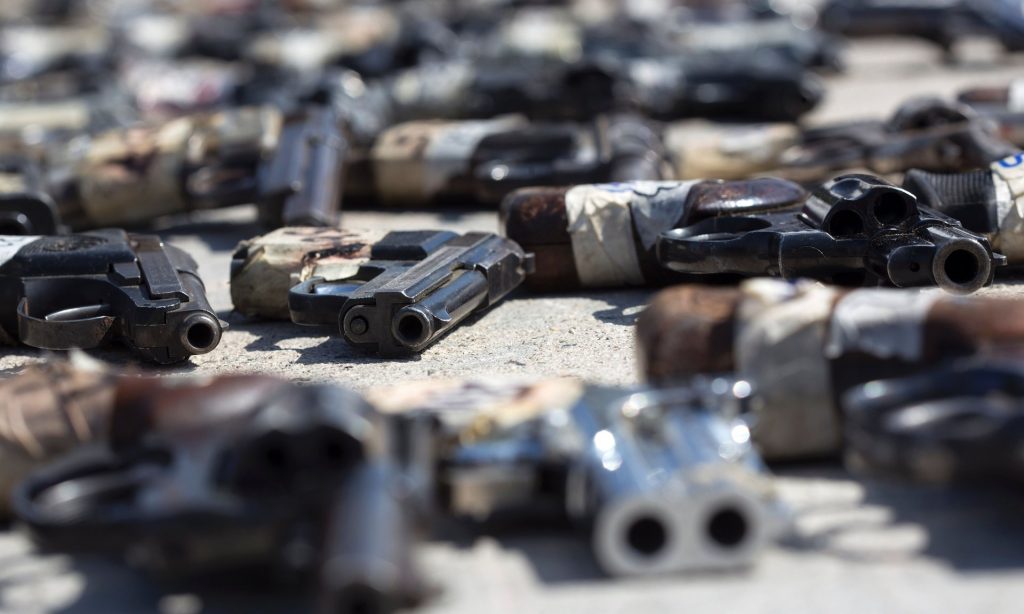
Photograph: Guillermo Arias/AFP/Getty Images
The world is becoming a less peaceful place according to this year’s global peace index, with violence and war more entrenched in certain countries, and terrorism at an all-time high. The Middle East and North Africa is the world’s least peaceful region, and conflict in Syria and Iraq is frequently in the headlines. South Sudan has been in strife since December 2013 and the civil war in Yemen has killed more than 3,000 civilians.
Even for some countries ostensibly at peace, violence is a reality for many, from the favelas of Rio de Janeiro to the Lake Chad basin, where Boko Haram’s insurgence is creating a crisis of displacement, hunger and fear for people in parts of Nigeria, Niger, Chad and Cameroon.
The link between peace and development seems obvious – war and the arms trade divert money from schools, hospitals and more, and can destroy years of development in a single blast. Conflict dissuades businesses from investing and diverts development funds to caring for displaced people.
The sustainable development goals – ambitions covering all countries, rich and poor alike, that were agreed at the UN in 2015 – have a specific mandate for peace. Goal 16 calls on states to “promote peaceful and inclusive societies for sustainable development”. But how can that be achieved? Can countries develop while fighting? Should NGOs focus more on creating peace? Can development agencies work alongside those fighting?
We’d like to hear your thoughts. Submit a response of 250 words or fewer and we’ll publish the best ones. Keep your response clear and concise, avoiding development or academic jargon. Email your response to development@theguardian.com with “Students Speak” in the subject line. Please include your name, the country in which you live, and the university or college you attend. Submissions close at 6pm BST on 2 September.

